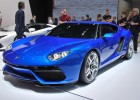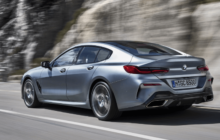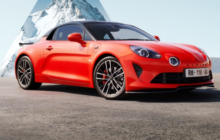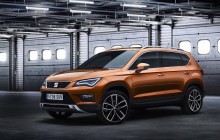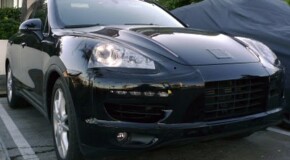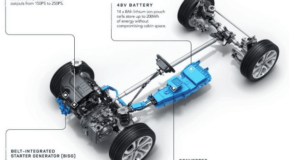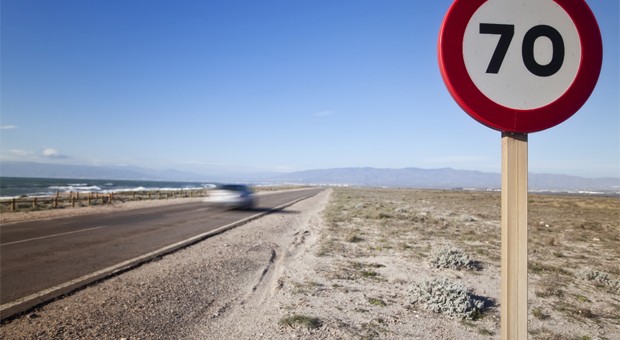
Infographic: The Evolution of the 250+ MPH Supercar
The Pursuit of Power
Have you ever dreamed of owning a state-of-the-art supercar? Once you’ve laid eyes on a vehicle that can break away from zero to 60 in less than three seconds, it’s awfully hard not to dream about owning one.
Supercars have a rich history and a special place in the automotive world. Although most drivers won’t get the chance to own one of their own, they’re an adored and cherished family of automobiles.
And what’s not to love? The power of these cars is truly astounding, and their heritage is fascinating. For example, the Bugatti Veyron, one of the fastest modern supercars, consumes the same amount of oxygen that an adult consumes in four days in just one minute when it’s running at top speed.
Find out how the supercars we know and love today came to be in the graphic below.

Bentley Speed Six – 1926
0-60 mph: 14.2 seconds
Top speed: 84 mph
BHP: 180
Engine size: 6597 cc
Production years: 1926-1930
Numbers produced: 544
As the car that won the 24 hours of Le Mans and the Brooklands Double 12, the Bentley Speed Six is the most successful racing model that the company has ever produced. What’s more, it’s seen as the world’s first true supercar, a piece of automotive engineering that far surpassed the expectations and limitations of its time period.
Mercedes-Benz 300SL – 1954
0-60 mph: 8.8 seconds
Top speed: 135 mph
BHP: 212
Engine size: 2996 cc
Production years: 1954-1957
Price on release: $11,000
Numbers produced: 1400
Known for it’s iconic “gull wing” doors, the Mercedes-Benz 300SL is considered to be the biggest stepping stone between classic sports cars and modern supercars. Clark Gable, whose affinity for fast cars was no secret, owned a 1955 model of the SL300 that sold for $1.85 million in 2013.
Lamborghini Miura – 1966
0-60 mph: 7 seconds
Top speed: 171 mph
BHP: 350
Engine size: 3929 cc
Production years: 1966-1973
Price on release: $20,000
Numbers produced: 764
Company founder and tractor manufacturer Ferruccio Lamborghini took issue with the first Ferrari he owned and went to Enzo Ferrari himself to complain. The two had an altercation and Ferrari claimed that Lamborghini was the problem, not the car. The Miura was Ferruccio’s riposte…and it scored.
Lamborghini Countach LP 400 – 1974
0-60 mph: 5.4 seconds
Top speed: 192 mph
BHP: 370
Engine size: 3929 cc
Production years: 1974-1978
Price on release: $100,000
Numbers produced: 151
The Countach is adored by car lovers as one of the most beautiful automobiles ever designed. In fact, its name is actually a Piedmontese exclamation intended for when a man lays eyes on a gorgeous woman.
Ferrari F40 – 1987
0-60 mph: 4.2 seconds
Top speed: 200 mph
BHP: 471
Engine size: 2936 cc
Production years: 1987-1992
Price on release: $400,000
Numbers produced: 1,315
When it was released in 1987, the Ferrari F40 was the fastest car the world had ever seen. With its 200 mph top speed and ability to bolt from 0-60 in just 3.8 seconds, gives the F40 gives even some modern supercars a run for their money.
Fun fact: British rock musician Rod Stewart owned a red F40 for a time, and it was auctioned off in August 2014.
Pagani Zonda S – 2002
0-60 mph: 3.6 seconds
Top speed: 220 mph
BHP: 555
Engine size: 7291 cc
Production years: 2002-2005
Price on release: $500,000
Numbers produced: 18
The Zonda S is a notable member of the modern supercar family. A 555-hp Mercedes-AMG engine and mostly carbon fiber body allow this amazing piece of engineering to achieve lightning fast speeds. Famous hip-hop artist Wyclef Jean owns a $350,000 C12-S.
Bugatti Veyron 16.4 Super Sport – 2010
0-60 mph: 2.6 seconds
Top speed: 2687 mph
BHP: 1001
Engine size: 7993 cc
Production years: 2010 – current
Price on release: 1.7 million
Numbers produced: 30
Current king of the hill is the Bugatti Veyron. It was designed to a brief by VW Group boss Ferdinand Piech: to make a 250+ mph supercar that was elegant enough to be driven to the opera, if the owner so desired.
The new standard in high performance supercars is so high, a separate key is needed to unleash their full potential and top speed.
Top speed is a defining characteristic for supercars.
Source


